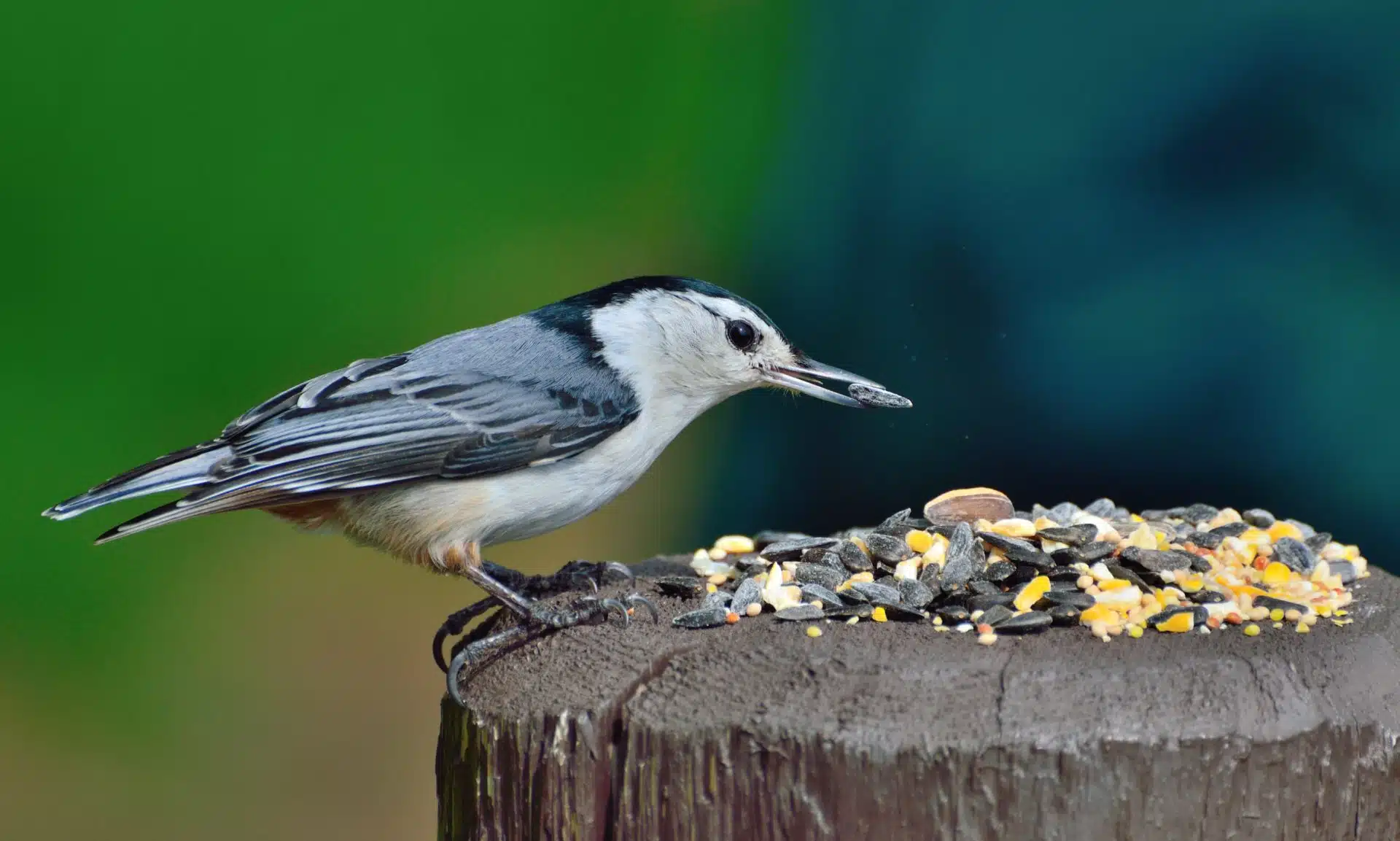Voice: Males late winter and spring low-pitched wha-wha-wha. Year round, both sexes loud, nasal yank repeated a few times in a row.
White-breasted nuthatches are common feeder birds found year round in mature woods and woodland edges throughout Ohio. They prefer deciduous tree communities with maples (Acer), hickories (Carya), basswoods (Tilia) and oaks (Quercus). They also can inhabit open deciduous or mixed hardwood forest in parks, yards and cemeteries.
White-breasted nuthatches get their name from their behavior of lodging seeds or nuts in tree crevices then hatching or hammering it out later when they are hungry. They hide their cache temporarily with small pieces of bark, lichen, moss or snow until they are ready to consume. White-breasted nuthatches are one of a few species of birds that can creep up, down and side to side or head first on a tree trunk to forage and store food. They mainly eat spiders and insects, including wood-boring beetle larvae, adult beetles, tree hoppers, scales, ants, fly larvae, caterpillars, stinkbugs, and click beetles. In winter, white-breasted nuthatches tend to forage in flocks with chickadees and titmice consuming more seeds and nuts, including acorns, hawthorn and sunflower seeds. At birdfeeders they eat sunflower seeds, peanuts, suet and peanut butter.
White-breasted nuthatches are monogamous throughout the year. In spring they build their nests in natural tree cavities or abandoned woodpecker holes, and often reuse their nest holes in subsequent years. Sometimes they enlarge the cavity but rarely excavate them entirely on their own. Despite their association with deciduous woods, they can nest in both coniferous and deciduous trees depending on the availability of cavities. Once a nest site is determined, female white-breasted nuthatches line their nest cavities with fur, bark and lumps of dirt. After which females construct a cupped nest of grass, shredded bark, feathers and other soft material.
White-breasted nuthatches have a single brood during the breeding season. Females incubate five to eight white eggs with reddish brown spots for 12 to 14 days. Males feed their mates during the incubation period. Both parent feed the young. Young leave the nest in 14 to 16 days. Both parent birds feed the fledglings for up to two more weeks after they leave the nest.
White-breasted nuthatches populations are widespread and stable. Their numbers have slightly increased in the northeast due to forest regrowth and the availability of bird feeders. Dead or decaying trees are essential for white-breasted nuthatch and other cavity nesting species survival. Removal of logs and decaying trees can reduce the nesting opportunities for this any many other species.





